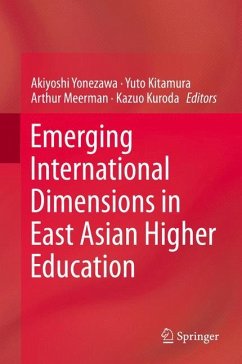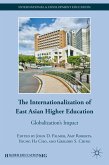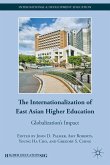In East Asia, higher education has relied heavily on private and marketized forces in its rapid development process. At the same time, state governments have introduced strong initiatives especially in upgrading the global positioning of their flagship universities through their pursuit of international competitiveness. Currently, these well-known characteristics of East Asian higher education are challenged by the necessity to formulate international dimensions for regional and global well-being, without a clear consensus as to a regional future vision.
The changing roles of East Asian higher education in a new global environment have implications for academics and policy-makers who not only wish but also need to understand the most recent developments and future prospects of higher education from an East Asian point of view. In Emerging International Dimensions in East Asian Higher Education, authors from a wide variety of cultural and academic backgrounds examine the changing context of East Asian higher education in the global, regional, and national dimensions
The analysis and case study material in this volume are strengthened by the wealth of contributors' diverse national and professional backgrounds. Most have practical experience in the formulation of higher education policy in two or more countries. The range of disciplinary perspectives that contributors brought to the book - including sociology, political science, anthropology,
economics, philosophy and history - strengthen the multi-disciplinary approach, credibility, and uniqueness of the work.
Each chapter considers the impact of the emergence of international dimensions in East Asian Higher Education through detailed consideration of trends and debates over higher education reforms at the regional, sub-regional, inter-regional and national levels. Issues such as student mobility, cross-border higher education programs, quality assurance, and demands from the market economy, among others, are examined.
The changing roles of East Asian higher education in a new global environment have implications for academics and policy-makers who not only wish but also need to understand the most recent developments and future prospects of higher education from an East Asian point of view. In Emerging International Dimensions in East Asian Higher Education, authors from a wide variety of cultural and academic backgrounds examine the changing context of East Asian higher education in the global, regional, and national dimensions
The analysis and case study material in this volume are strengthened by the wealth of contributors' diverse national and professional backgrounds. Most have practical experience in the formulation of higher education policy in two or more countries. The range of disciplinary perspectives that contributors brought to the book - including sociology, political science, anthropology,
economics, philosophy and history - strengthen the multi-disciplinary approach, credibility, and uniqueness of the work.
Each chapter considers the impact of the emergence of international dimensions in East Asian Higher Education through detailed consideration of trends and debates over higher education reforms at the regional, sub-regional, inter-regional and national levels. Issues such as student mobility, cross-border higher education programs, quality assurance, and demands from the market economy, among others, are examined.
"The purpose of the book is to take an in-depth and holistic look at the internationalization of higher education in East Asia. ... It is a valuable resource for students and scholars who seek to broaden their knowledge of international and comparative higher education. Moreover, the book is also a highly recommended document for any institutional governing body or national and regional policy maker who is aiming to maintain positive international cooperation efforts." (Shuhua Liu, Higher Education, Vol. 69, 2015)








